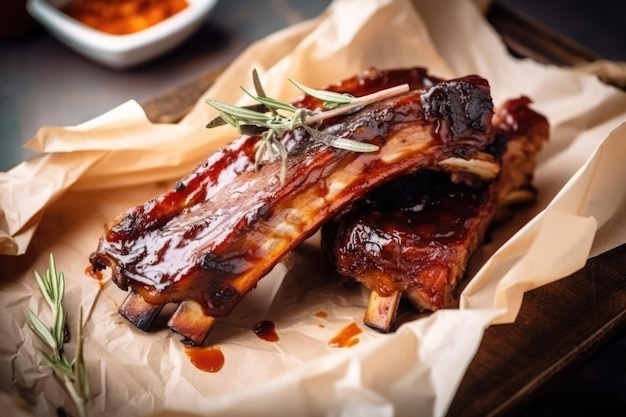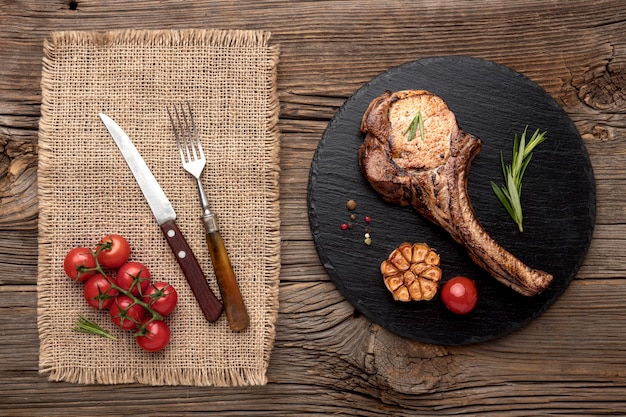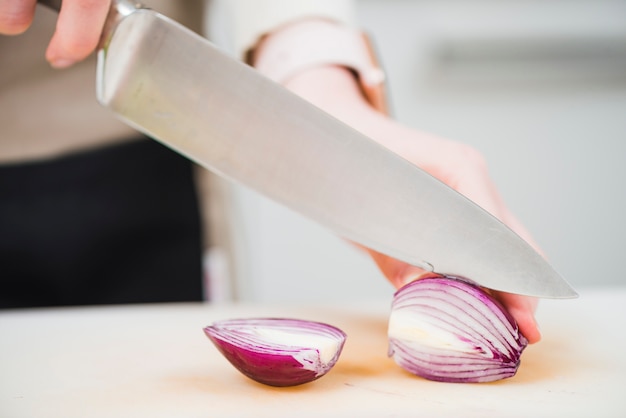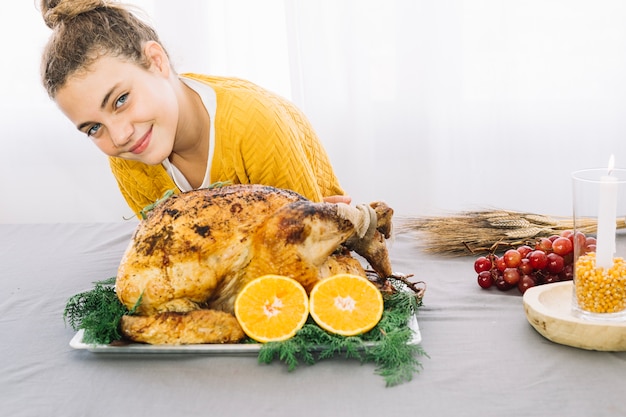Let's face it, there's something truly special about a perfectly cooked bone-in beef rib roast. The aroma alone can fill your kitchen with a sense of anticipation and excitement. It's a dish that screams celebration, whether you're hosting a grand feast or simply enjoying a special dinner with loved ones.
But let's be honest, the idea of cooking a rib roast can be a bit intimidating. It's a big piece of meat, and the stakes are high – a dry, tough roast can be a culinary disaster. But fear not! This guide will walk you through every step of the process, from choosing the perfect roast to carving it like a pro. We'll uncover the secrets to achieving that magnificent bark, juicy interior, and irresistible aromas that will have your guests begging for seconds.
(Part 1) Choosing Your Star: The Rib Roast

The Difference Between prime rib and standing rib roast
Imagine your rib roast as the main character in a culinary drama. You want to choose wisely, as the right type can make all the difference. Two stars often grace our tables: prime rib and standing rib roast.
Prime Rib: Often referred to as the "crown roast," prime rib is a cut from the 3rd to 7th ribs. It's a hefty piece of meat, known for its rich, buttery flavor and impressive marbling. This is a popular choice for special occasions and those who love a more intense beefy taste.
Standing Rib Roast: This showstopper is a whole rack of ribs, typically 7-8 ribs, creating a majestic presentation. It's perfect for large gatherings and offers a truly impressive table-side carving experience. While it may require a bit more effort to prepare, the visual impact and flavor are worth it.
Honestly, I'm a huge fan of the standing rib roast. It just adds that extra touch of grandeur and makes everyone feel like they're attending a special event.
Size Matters: Deciding on the Right Weight
Now that you’ve chosen your leading role, it’s time to think about the size of the cast. How many people are you feeding? Remember, a rib roast is a generous dish. As a general rule of thumb, plan for 1 pound per person. If you're aiming for leftovers (and trust me, you'll want some!), you'll need about 1.5 pounds per person.
To help you decide, here's a quick guide:
| Number of People | Recommended Rib Roast Size |
|---|---|
| 4-6 | 4-6 pounds |
| 8-10 | 8-10 pounds |
| 12-14 | 12-14 pounds |
Looking for the Perfect Cut: Marbling and Colour
You wouldn't cast a supporting actor in the lead role, and the same goes for your rib roast. Look for a cut that's nicely marbled, meaning it has a good balance of fat and lean meat. This marbling will render during cooking, adding juiciness and a depth of flavor that's simply irresistible.
A deep red colour with good marbling is a sure sign of quality. Don't be afraid to ask your butcher for advice. They're the experts, and they want you to have the best possible experience.
Prepping the Stage: Choosing Your Cut
Before you start your culinary production, take a moment to get acquainted with your star. Notice that bone running down the centre of the roast? This is where things get interesting. You have a choice:
Leave it Whole: For a more dramatic presentation, you can leave the roast whole. It's an impressive sight on the table and creates a truly elegant experience.
Cut into Individual Ribs: If you prefer individual servings or simply want to make the carving process a bit easier, you can cut the roast into separate ribs.
It's all about personal preference and what you think will look and feel best for your occasion.
(Part 2) The Art of Resting: Preparing for the Big Act

Why Resting is Crucial: The Science Behind It
Before you even think about prepping your roast, there's one vital step that often gets overlooked – resting. Think of it as a backstage warm-up, a moment for the roast to settle in and prepare for its grand entrance.
When you cook a roast, the heat forces the juices toward the center. If you cut into it right away, all those delicious juices will flow out, leaving you with dry, disappointing meat. By resting the roast, you give those juices time to redistribute evenly throughout the meat, resulting in tender, flavorful slices that melt in your mouth.
The Resting Ritual: How to Do It Right
The ideal resting time is at least 30 minutes. For truly exceptional results, aim for an hour or even more. Simply place your roast on a cutting board, cover it loosely with foil, and let it relax. The longer it rests, the more time those juices have to distribute and the more tender your roast will be.
(Part 3) The Essential Pre-Game: Seasoning

The Foundation of Flavor: Choosing the Right Seasoning
Think of seasoning as the foundation for your culinary masterpiece. It's the base note that everything else builds upon. You want a seasoning that will enhance the natural flavors of the beef without overwhelming it.
My Go-To Seasoning Blend: Simple Yet Powerful
Here's my go-to seasoning for a bone-in rib roast, a blend that consistently delivers delicious results:
Kosher Salt: I prefer kosher salt because it's less salty than table salt, allowing you to season more liberally without being overly salty.
Freshly Ground Black Pepper: There's a certain magic to freshly ground black pepper. It adds a vibrant, peppery aroma that complements the beef beautifully.
Garlic Powder: A subtle touch of garlic powder adds a warm, savory depth to the seasoning.
Onion Powder: Onion powder brings a layer of savory goodness, enhancing the overall flavor profile.
Paprika: A sprinkle of paprika adds a touch of color and a hint of smokiness.
Seasoning Techniques: Two Approaches
Now, there are two main ways to apply this seasoning:
dry rub: This is my preferred method. Simply rub the seasoning mixture all over the roast, making sure to get it into all the crevices. Let it rest for at least an hour, or even overnight, for the maximum flavor infusion.
Simple Salt and Pepper: If you're looking for a more streamlined approach, a generous amount of salt and pepper will do wonders.
(Part 4) Bringing the Heat: cooking techniques
The Classic Method: oven roasting
This is the tried-and-true way to cook a bone-in rib roast. It's simple, reliable, and always delivers consistent results.
1. Preheat Your Oven: Begin by setting your oven to a high temperature, around 450 degrees Fahrenheit. This intense heat will help create a beautiful, crispy crust.
2. Searing for Flavor: Before the roast goes into the oven, give it a good sear on all sides. This will lock in the juices and create a delicious crust that's both visually appealing and incredibly flavorful. You can sear in a cast iron pan or a dutch oven.
3. Roast to Perfection: Once seared, transfer the roast to a roasting pan. You want a roasting pan that’s large enough to accommodate the roast and has a rack. This will ensure even cooking and prevent the roast from sitting in its own juices.
Place the pan in the oven and roast until the roast reaches your desired level of doneness:
Rare: 125-130 degrees Fahrenheit
Medium Rare: 130-135 degrees Fahrenheit
Medium: 135-140 degrees Fahrenheit
Medium Well: 140-145 degrees Fahrenheit
Well Done: 145 degrees Fahrenheit or more
Remember to use a meat thermometer to ensure accuracy! Insert the thermometer into the thickest part of the roast, avoiding the bone.
4. Rest Time: Once the roast is cooked, let it rest for at least 30 minutes.
The reverse sear Technique: Slow and Steady Wins the Race
This method involves a lower temperature for an extended period, followed by a high-heat sear. The result is a wonderfully tender roast with a delicious crust.
1. Low and Slow: Preheat your oven to 225 degrees Fahrenheit. Place the roast in your roasting pan and cook for 3-4 hours, or until it reaches an internal temperature of 120-125 degrees Fahrenheit.
2. Increase the Heat: When the roast has reached the desired doneness, crank up the heat to 450 degrees Fahrenheit.
3. Final Sear: Return the roast to the oven and cook for 15-20 minutes, until it reaches your desired final temperature.
4. Rest Time: Let the roast rest for at least 30 minutes.
roasting time: A Rough Guide
The roasting time for a rib roast can vary depending on the size and thickness of the roast, and your desired level of doneness. Here are some general guidelines:
4-6 pound roast: 1-1.5 hours
8-10 pound roast: 2-2.5 hours
12-14 pound roast: 3-3.5 hours
(Part 5) The Final Act: Carving
The Art of Carving: Presenting Your Masterpiece
Carving a rib roast is a dramatic affair. It's the moment you reveal your culinary masterpiece, and it deserves a little theatrical flair. Take your time and enjoy the process.
The Tools You Need
You'll need a sharp carving knife and a carving fork. A carving board will add a touch of elegance and make the process a bit easier.
Step-by-Step Guide
1. Slice Against the Grain: This is crucial for tender, juicy slices. The grain refers to the direction of the muscle fibres. If you slice with the grain, you'll end up with tough, stringy meat.
2. Start with the Rib Bone: Use your carving knife to carefully separate the meat from the rib bone.
3. Slice the Roast: Cut the roast into even slices, about ?? inch thick.
4. Arrange the Slices: Arrange the slices on a platter. You can add some garnish, like fresh rosemary or thyme, for an extra touch of visual appeal.
Carving Tips: Making It Easier
Sharp Knife is Key: A sharp knife makes the job much easier and helps prevent tearing the meat.
Cut with Confidence: Don't be afraid to use a little pressure when slicing.
Ask for Help: If you're not comfortable carving a roast, don't hesitate to ask a friend or family member for help.
(Part 6) The Sidekicks: Perfect Accompaniments
Finding the Right Supporting Cast: Complementing Your Roast
A bone-in rib roast deserves a supporting cast of delicious side dishes. These should complement the roast, not overshadow it. Think about creating a balance of flavors and textures.
My Favorite Accompaniments
Roasted Vegetables: Root vegetables like potatoes, carrots, and parsnips are perfect for this dish. Toss them with olive oil, salt, pepper, and herbs like rosemary or thyme, and roast them in the oven along with the roast.
Creamed Spinach: This classic side dish is rich, creamy, and balances the richness of the roast perfectly.
Yorkshire Pudding: This puffed-up bread is traditionally served with roast beef and adds a wonderful textural contrast.
Gravy: A rich, flavorful gravy is essential for mopping up all the delicious juices from the roast.
Red Wine Sauce: A red wine sauce adds a touch of sophistication and complexity to the meal.
A Final Note on Side Dishes
Keep in mind that the side dishes you choose should also be relatively easy to prepare. You don’t want to be spending all your time in the kitchen while your roast is resting.
(Part 7) The Final Touch: Garnishing and Presentation
Creating a Culinary Masterpiece: Presentation Matters
Remember, presentation is everything! A beautiful plate can elevate your roast from a simple meal to a culinary experience.
Garnishing Ideas: Adding a Touch of Flair
Fresh Herbs: A sprinkle of fresh rosemary, thyme, or parsley adds a pop of color and flavor.
Lemon Wedges: Lemon wedges add a touch of brightness and acidity.
Roasted Garlic Cloves: Roasted garlic cloves add a sweet and savory note.
crispy onion rings: A few crispy onion rings add a satisfying crunch.
Plate Your Creation: Setting the Stage
Use a Platter: Place the roast on a beautiful platter to showcase your culinary masterpiece.
Arrange the Sides: Arrange the sides around the roast in a pleasing way.
Garnish Generously: Don’t be afraid to add a generous amount of garnishes.
(Part 8) FAQs: Answering Your Questions
Q: What’s the best way to store leftover roast beef?
A: Wrap the leftover roast beef tightly in plastic wrap or foil and store it in the refrigerator for up to 4 days. You can also freeze leftover roast beef for up to 3 months.
Q: How can I tell if the roast is cooked to my desired level of doneness?
A: Use a meat thermometer to determine the internal temperature of the roast. Here are the general temperatures for different levels of doneness:
Rare: 125-130 degrees Fahrenheit
Medium Rare: 130-135 degrees Fahrenheit
Medium: 135-140 degrees Fahrenheit
Medium Well: 140-145 degrees Fahrenheit
Well Done: 145 degrees Fahrenheit or more
Q: What if my roast is too dry?
A: If your roast is a bit dry, you can add some moisture back in by adding a little bit of broth or juice to the pan and letting it simmer for a few minutes.
Q: Can I cook the roast in a slow cooker?
A: It's not recommended to cook a rib roast in a slow cooker. The long cooking time can make the meat tough and dry.
Q: What are some tips for carving a roast?
A: The key to carving a roast is to slice against the grain. This will ensure that the slices are tender and juicy. Use a sharp carving knife and a carving fork to help you with the process. Don’t be afraid to ask for help if you’re not comfortable carving a roast.
Everyone is watching

The Ultimate Guide to Cooking Sweet Potatoes: From Roasting to Mashing
RecipesSweet potatoes. Just the name conjures up images of warm, comforting dishes, bursts of vibrant color, and a to...

Caramelized Onions: The Ultimate Guide to Sweet, Savory Perfection
RecipesAh, caramelized onions. Those gloriously sweet, sticky, and utterly addictive little gems. They're the culinar...

Ultimate Turkey Cooking Time Guide: From Raw to Perfectly Roasted
RecipesAh, the turkey. A symbol of festive gatherings, a culinary challenge, and a source of delicious leftovers. But...

Wolf Meat Recipes: A Guide to Cooking Wild Game
RecipesLet's be honest, you don't see wolf meat at your local butcher shop every day. It's a bit of a wild card, but ...

Pigs in a Blanket Cooking Time: How Long to Bake for Perfect Results
RecipesAh, pigs in a blanket. Just the name conjures up images of those delightful little parcels of crispy pastry en...
